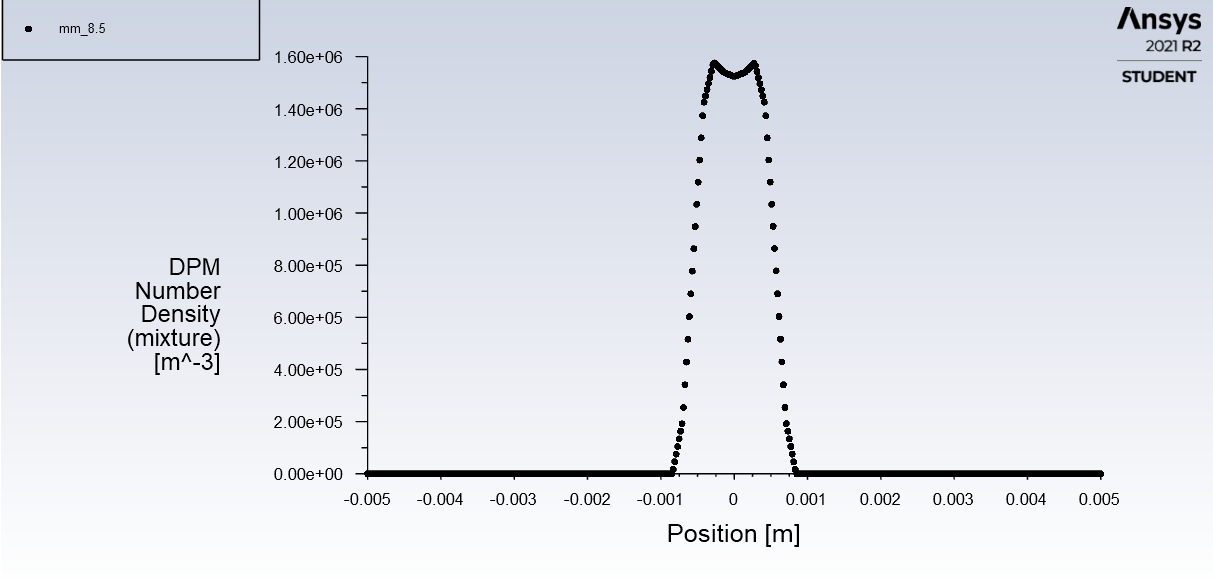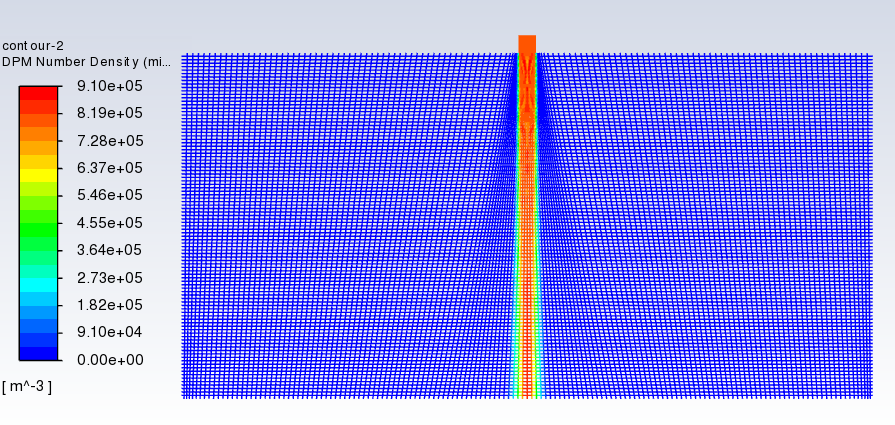-
-
August 12, 2021 at 12:02 pm
deepu3100
SubscriberHi all,
I am doing two phase flow simulation in Ansys fluent module where the primary fluid is water and secondary fluid is inert particles (solid particles) modeled using DPM.
In the post processing stage, I am able to get the 'Particle number density distribution (number of particles per unit volume)' of the solid inner particles at a particular height radially when the mixture of two phase exits out of the nozzle. However, now I want to know only the number of particles distributed radially at a given height after exiting the nozzle but not the particle number density per unit volume.
As we know that particle no. density is nothing but number of particles per unit volume (#1/m^3) but I need only the number of particles (#) distributed radially at that height without any volume unit in it.
How can I acquire the radial distribution of number of particles at a given height when the particles are exiting the nozzle?
For understanding the geometry used in the simulation, a figure is attached below
August 12, 2021 at 1:07 pmRob
Forum ModeratorGiven pretty much all of the tracks look to be going through about 2-4 cells I'd be refining the mesh before trying to do any additional post processing.
Plot contours in 2d with no faces selected, you'll see a continuous colour rather than all the facet edges.
August 12, 2021 at 1:50 pmdeepu3100
SubscriberDear Rob The radial Particle number density distribution at a height of 8 mm from the nozzle exit is given below. In that the Particle number density units is (1/m^3) but I want only the radial particles distribution which will have no unit (i.e., no. of particles any radial location at a 2D line present at 8 mm from the nozzle exit)
 I want the no. of particles distributed at any radial location from the position 0.
I want the no. of particles distributed at any radial location from the position 0.
August 12, 2021 at 2:04 pmdeepu3100
SubscriberDear Rob My question is, how to convert the DPM number density (1/m^3) to number of particles at any radial position?
Thanks in advance
August 12, 2021 at 4:11 pmRob
Forum ModeratorHave a look at the DPM Concentration definition and see what you think. Note, we track parcels so it's not quite as simple as you may think.
Viewing 4 reply threads- The topic ‘How can I acquire the radial distribution of number of particles at a given height ?’ is closed to new replies.
Innovation SpaceTrending discussionsTop Contributors-
4708
-
1565
-
1386
-
1242
-
1021
Top Rated Tags© 2026 Copyright ANSYS, Inc. All rights reserved.
Ansys does not support the usage of unauthorized Ansys software. Please visit www.ansys.com to obtain an official distribution.
-


Ansys Assistant

Welcome to Ansys Assistant!
An AI-based virtual assistant for active Ansys Academic Customers. Please login using your university issued email address.
Hey there, you are quite inquisitive! You have hit your hourly question limit. Please retry after '10' minutes. For questions, please reach out to ansyslearn@ansys.com.
RETRY








